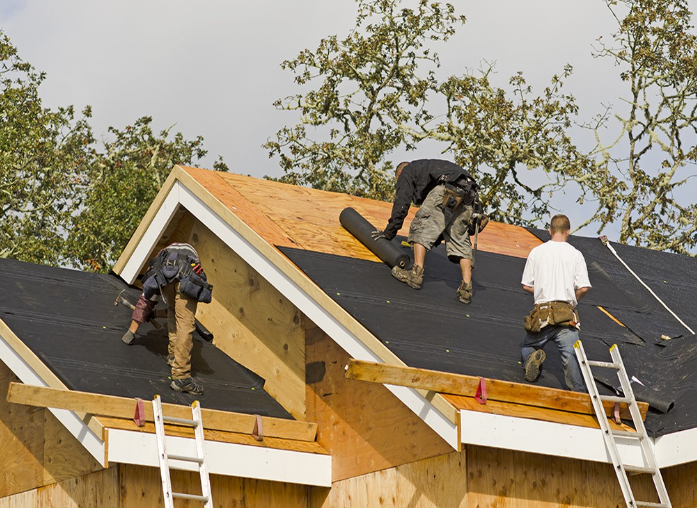Panchakarma Ayurveda is an ancient healing system that focuses on detoxifying the body, restoring balance, and promoting overall well-being. Derived from traditional Indian medicine, Panchakarma is known for its ability to cleanse and rejuvenate both the body and mind. If you are considering Panchakarma treatment, it’s essential to understand the different stages involved. This blog will break down the stages of Panchakarma Ayurveda treatment in simple, easy-to-understand terms, guiding you through the process step by step.
Note : If you’re ready to experience the transformative power of Panchakarma, visit our Panchakarma Ayurveda Center Dubai today!
Understanding Panchakarma Ayurveda

What is Panchakarma Ayurveda?
Panchakarma, meaning “five actions,” refers to a series of therapeutic treatments designed to detoxify and cleanse the body. The core principle of Panchakarma is to eliminate toxins (known as “ama”) that accumulate in the body due to poor digestion, environmental factors, stress, and unhealthy lifestyle choices.
The treatment aims to balance the body’s three doshas—Vata, Pitta, and Kapha—while enhancing physical, mental, and spiritual health. Panchakarma also improves immunity, boosts energy levels, and helps individuals achieve long-term wellness.
The Importance of Panchakarma Ayurveda Treatment
Before diving into the stages of the treatment, it’s important to understand why Panchakarma is so beneficial.
- Detoxification: It helps clear toxins from the body, which can lead to better digestion, improved skin, and overall health.
- Rejuvenation: Panchakarma restores the body’s natural balance, making you feel refreshed and energized.
- Stress Relief: It helps relax the nervous system, reduces stress, and promotes mental clarity.
- Improved Immunity: By cleansing the body, it strengthens the immune system, helping you fight off illnesses.
Now that we know the benefits, let’s explore the stages of Panchakarma treatment.
The Different Stages of Panchakarma Ayurveda Treatment
Panchakarma treatment involves five key stages that work together to cleanse and rejuvenate the body. These stages are designed to be carried out in a specific sequence for maximum effectiveness. The five main stages of Panchakarma are:
- Purvakarma (Preparatory Phase)
- Pradhan Karma (Main Therapy Phase)
- Paschat Karma (Post-Therapy Phase)
Each of these stages has its own purpose and is crucial to the success of the Panchakarma process.
Purvakarma: The Preparatory Phase
The first stage of Panchakarma treatment is Purvakarma, which is the preparatory phase. This phase helps prepare the body for the main detoxification process. It is divided into two key components: Snehana (oleation) and Swedana (steam therapy).
What is Snehana (Oleation)?
Snehana refers to the process of applying oils or ghee to the body, either externally or internally, to lubricate the tissues and soften accumulated toxins. The oils used in this treatment are typically medicated with herbs to address specific health concerns.
- External Oleation: The therapist will apply herbal oils to your body, massaging them in to penetrate the skin and loosen toxins from deep tissues. This promotes relaxation and prepares the body for the next phase of treatment.
- Internal Oleation: In some cases, you may be asked to consume medicated ghee or oils. These help loosen toxins inside the body, improving digestion and balancing the doshas.
What is Swedana (Steam Therapy)?
Swedana involves the use of steam to open the pores, which helps to release toxins from the body. This is typically done after Snehana, as the oils applied to the body need heat to penetrate the skin deeply.
- The process involves sitting in a steam chamber or a covered bed while herbal steam is directed at your body.
- This therapy improves circulation, promotes relaxation, and supports the body in releasing toxins through sweat.
Pradhan Karma: The Main Therapy Phase
After the body is properly prepared, the next stage of Panchakarma is Pradhan Karma, the main therapy phase. This is when the detoxification process truly begins. There are five specific treatments, or “Karmas,” involved in this phase:
- Vamana (Emesis Therapy)
- Virechana (Purgation Therapy)
- Basti (Enema Therapy)
- Raktamokshana (Bloodletting)
- Nasya (Nasal Therapy)
These treatments are carefully chosen based on the individual’s health conditions and dosha imbalances. Let’s take a closer look at each of these therapies.
Vamana (Emesis Therapy)
Vamana is the process of therapeutic vomiting, which is used to expel excess mucus or toxins from the stomach and upper respiratory tract. This therapy is often recommended for individuals with a Kapha imbalance or those suffering from respiratory issues like asthma, allergies, or sinus problems.
- Process: A medicated herbal concoction is given to the patient, which induces vomiting to clear out toxins from the stomach and lungs.
- Benefits: Vamana helps clear the respiratory passages, improves digestion, and boosts the overall immune system.
Virechana (Purgation Therapy)
Virechana involves therapeutic purgation or the use of herbal laxatives to cleanse the intestines and digestive system. It is typically used for Pitta imbalances and conditions such as acidity, indigestion, or skin disorders.
- Process: The patient is given herbal medicines that induce bowel movements, clearing toxins from the liver, intestines, and gallbladder.
- Benefits: This therapy improves digestion, clears the body of toxins, and balances the Pitta dosha.
Basti (Enema Therapy)
Basti is an enema treatment that helps cleanse the colon and remove toxins from the lower digestive tract. It is especially helpful for Vata imbalances and conditions like constipation, bloating, and lower back pain.
- Process: A mixture of medicated oils, herbal decoctions, or ghee is introduced into the colon through the rectum. This helps to cleanse the colon and reduce any excess Vata.
- Benefits: Basti therapy supports proper digestion, relieves constipation, and helps in balancing the Vata dosha.
Raktamokshana (Bloodletting)
Raktamokshana is a therapeutic bloodletting procedure used to cleanse the blood and treat various skin conditions like acne, eczema, or psoriasis. It is considered an advanced treatment and is rarely done in modern Panchakarma practices.
- Process: A small amount of blood is carefully drawn out from the body, usually from a vein or artery, to purify the blood.
- Benefits: This treatment helps eliminate toxins and impurities in the blood, leading to clearer skin and better overall health.
Nasya (Nasal Therapy)
Nasya involves the administration of herbal oils or juices through the nasal passages. This treatment is especially beneficial for individuals with respiratory problems, such as sinus congestion, allergies, or headaches.
- Process: A special herbal oil or juice is gently administered through the nostrils, where it travels into the sinuses, clearing out excess mucus and toxins.
- Benefits: Nasya helps clear the sinuses, improve breathing, and relieve headaches and neck pain.
Paschat Karma: The Post-Therapy Phase
The final stage of Panchakarma is Paschat Karma, or the post-therapy phase. This stage focuses on restoring the body to its normal state and ensuring that the benefits of the treatment are long-lasting. It is often referred to as the rejuvenation phase.
Diet and Lifestyle Recommendations
After completing the detox process, it’s important to follow specific dietary and lifestyle guidelines to maintain the benefits of Panchakarma. A light, easily digestible diet is typically recommended to help the digestive system regain its strength.
- You may be advised to consume kitchari (a simple dish made from rice and lentils) for a few days to allow the digestive system to reset.
- Fresh, organic fruits and vegetables, along with warm soups, herbal teas, and ghee, may also be part of your post-treatment diet.
- Avoid heavy, greasy, or processed foods, as they can disrupt the detoxification process.
Rest and Rejuvenation
During the post-therapy phase, rest is essential to allow the body to recover and heal. Your Ayurveda practitioner may recommend taking it easy and engaging in light activities like walking, yoga, or meditation to support the healing process.
Mental and Emotional Balance
Panchakarma also works to balance the mind and emotions. Practices like meditation, pranayama (breathing exercises), and yoga are often recommended to help maintain mental clarity, reduce stress, and achieve emotional well-being.
Conclusion
Panchakarma Ayurveda treatment is a powerful healing process that involves several stages to detoxify, rejuvenate, and restore balance to the body and mind. The stages—Purvakarma, Pradhan Karma, and Paschat Karma—work together to cleanse the body, improve overall health, and bring about long-lasting wellness.
Whether you are looking to detoxify, reduce stress, or address specific health concerns, Panchakarma offers a holistic approach to healing that can support your journey toward better health. By understanding the different stages of Panchakarma, you can be better prepared for this transformative treatment and enjoy all the benefits it has to offer.
For more insightful articles related to this topic, feel free to visit : techners












Leave a Reply